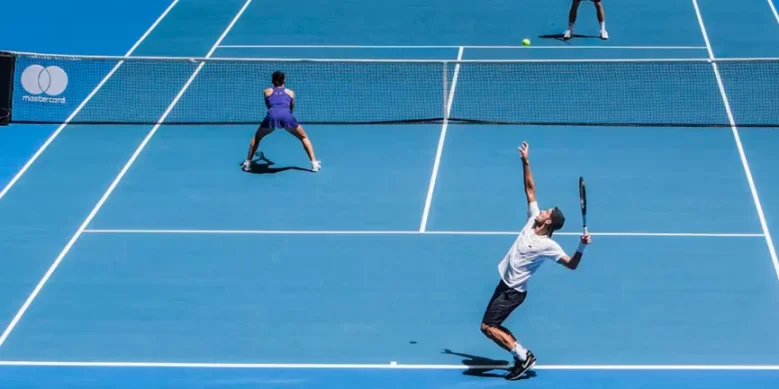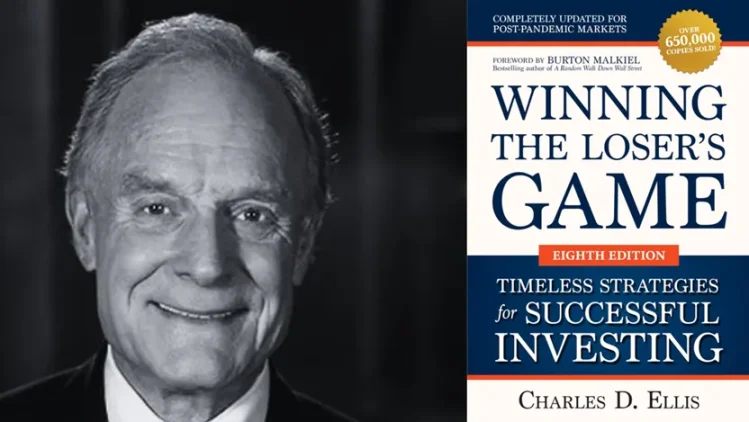Since BTC broke through $100,000, the entire Crypto market has stopped rising and has instead been falling for three consecutive months. The word most seen recently is "return to poverty", and many players who originally benefited well have also fallen into new struggles.
On the one hand, BTC ETF has made a grand entrance onto the historical stage, while on the other hand, the market has deteriorated extremely. Faced with such a bad market, if we want to survive the ups and downs, we can no longer hold the same ideas as in the past few cycles, because we have to admit that the market has changed.
So how can we survive in this market where people want to curse at others? I have recently seen some good opinions and thoughts, and I would like to share them with you.
Let's think about a question first: In high-level tennis matches at the Grand Slam level, is skill important or mentality important? And which one is more important in a match among ordinary amateur players?
To answer this question, Dr. Simon Ramo, a scientist and statistician, wrote a masterpiece on tennis strategy called "Extraordinary Tennis for Ordinary Players."
Through long-term observation, he found that there are two forms of tennis: one is the competition between professional players and a very small number of talented amateur players; the other is the competition between ordinary amateurs. Although both use the same equipment and abide by the same rules, their nature is very different.

After systematic scientific statistical research, Dr. Ramo concluded that professional players win games by actively scoring, while amateur players keep losing points due to mistakes. Professional players use precise and powerful shots to launch long and exciting offensives, and score by continuously pressuring their opponents to lose their positions. These top players rarely make mistakes, and their games can be called "winner games". The outcome depends entirely on the winner's active actions. Victory means not only getting higher scores, but also achieving suppression through active scoring.
Amateur tennis, on the other hand, is a completely different story. There are few exquisite shots, exciting and sustained rallies, and miraculous saves. Instead, the ball frequently hits the net and serves are often wrong. Amateur players rarely defeat their opponents, but always defeat themselves. The winners of these games often score more points because their opponents make more mistakes.
Dr. Ramo verified his theory through an innovative method: he abandoned the traditional scoring system and instead counted the ratio of points scored to points lost. The data showed that 80% of the points in professional games came from active offense, while 80% of the points in amateur games came from opponent mistakes.
This means that professional tennis is a typical "winner's game" where the outcome is determined by the winner's outstanding performance; amateur tennis is a "loser's game" where the outcome depends on the number of mistakes made by the loser. The two games are fundamentally different.
Based on this discovery, Dr. Ramo constructed a complete winning strategy: ordinary players only need to follow the simple tactics of "reducing mistakes and inducing opponents to self-destruct" to continue to win the game.
He clearly pointed out that if the purpose is to win rather than entertain, the core strategy should be to defend steadily, maintain the success rate of hitting the ball, and give the opponent enough room to make mistakes. After all, amateur players are often deeply trapped in the "loser game" without knowing it, and will eventually lose in self-consumption.
In his book, Dr. Ramo reveals the essential difference between "winner games" and "loser games": victory in the so-called "winner games" depends on skills that exceed expectations, while victory in the "loser games" depends on making fewer mistakes than other players.
Charles Ellis, hailed as "the smartest man on Wall Street" by the American magazine "Caixin" and one of the leading figures in the investment industry, classified modern investment as a loser's game and wrote a best-selling book "Winning the Loser's Game" for this purpose.

As Ellis said in the book, investing is like playing tennis. Winners can achieve better long-term results by making fewer mistakes, while losers will eventually lose money because they always make the same mistakes over and over again. No one can avoid making new mistakes, but successful investors repeat old mistakes less frequently.
Looking back at the Crypro market, it used to be a winner’s game, where participation and winning required above-average skills. But today, the Crypto market has largely evolved into a loser’s game—make fewer mistakes and win as long as you survive.
Therefore, the logic becomes that we only need to not do anything out of line when others are crazy about PvP or crazy about leverage, and we can greatly increase the possibility of winning in this game.
This is why a few years ago, you only needed to buy when the bull market came to make a profit, but now it is completely impossible, because the game has changed fundamentally. More than 90% of the players in the market do not need sophisticated operating techniques and strategies. What is important is to reduce the frequency of mistakes and errors to obtain above-average returns.
As Howard Marks, founder of Oaktree Capital, said: For me, the best way to succeed in investing in the long term is to not make mistakes, not make bad investments, and not have bad years. As long as you accumulate good investments one by one, as long as you have steady performance year after year, twenty, thirty, forty, fifty years, in the long run, it will be a successful investment career.
The above is for everyone to encourage each other. I hope we can all win our own victory in this game.
















